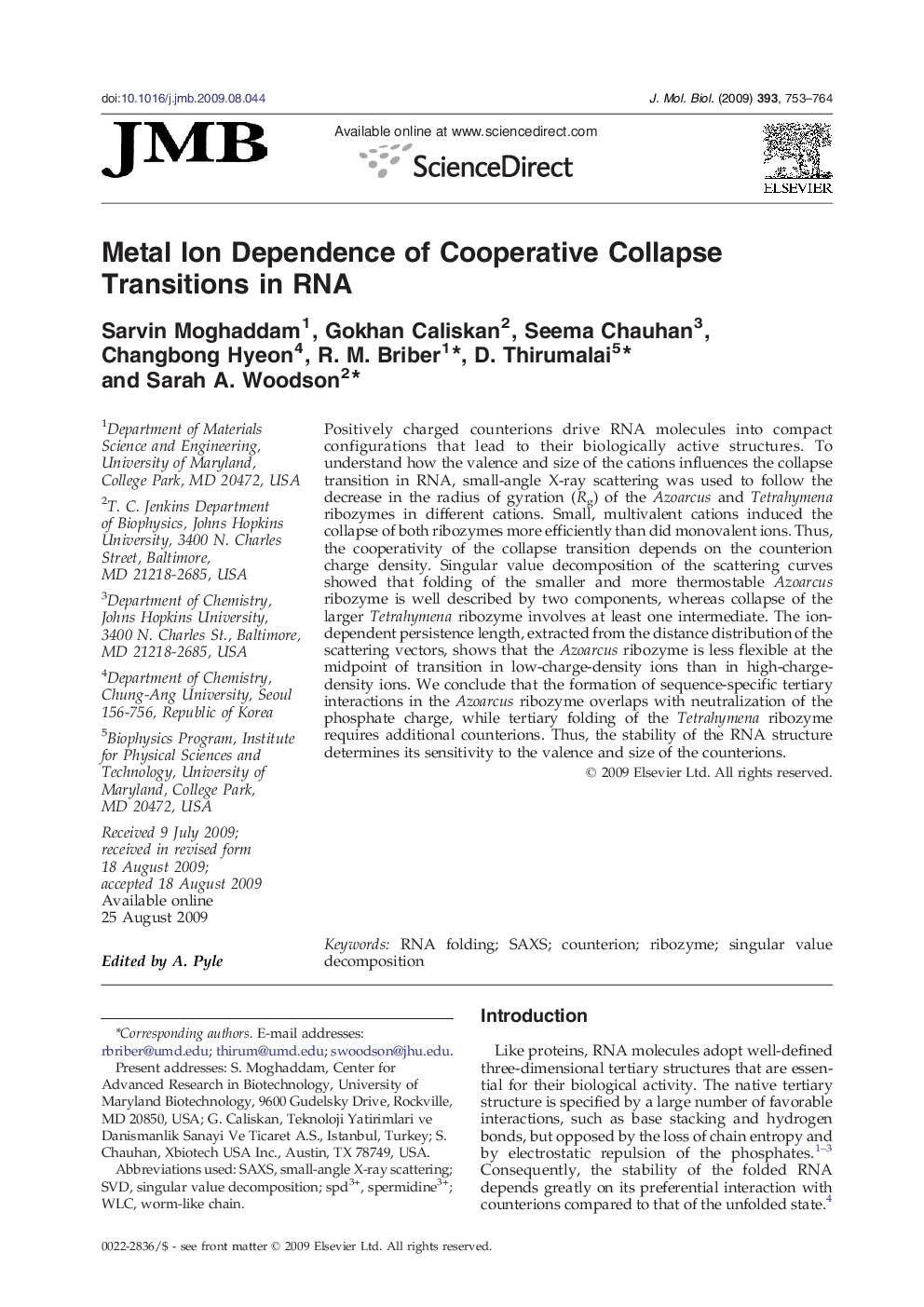| Article ID | Journal | Published Year | Pages | File Type |
|---|---|---|---|---|
| 2186184 | Journal of Molecular Biology | 2009 | 12 Pages |
Positively charged counterions drive RNA molecules into compact configurations that lead to their biologically active structures. To understand how the valence and size of the cations influences the collapse transition in RNA, small-angle X-ray scattering was used to follow the decrease in the radius of gyration (Rg) of the Azoarcus and Tetrahymena ribozymes in different cations. Small, multivalent cations induced the collapse of both ribozymes more efficiently than did monovalent ions. Thus, the cooperativity of the collapse transition depends on the counterion charge density. Singular value decomposition of the scattering curves showed that folding of the smaller and more thermostable Azoarcus ribozyme is well described by two components, whereas collapse of the larger Tetrahymena ribozyme involves at least one intermediate. The ion-dependent persistence length, extracted from the distance distribution of the scattering vectors, shows that the Azoarcus ribozyme is less flexible at the midpoint of transition in low-charge-density ions than in high-charge-density ions. We conclude that the formation of sequence-specific tertiary interactions in the Azoarcus ribozyme overlaps with neutralization of the phosphate charge, while tertiary folding of the Tetrahymena ribozyme requires additional counterions. Thus, the stability of the RNA structure determines its sensitivity to the valence and size of the counterions.
